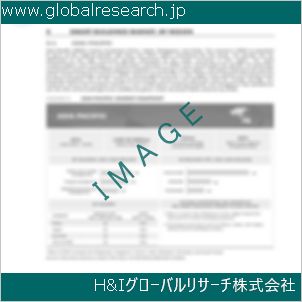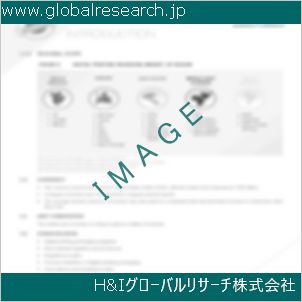Table of Contents
1 Industry Overview of Diisobutylene
1.1 Definition and Specifications of Diisobutylene
1.1.1 Definition of Diisobutylene
1.1.2 Specifications of Diisobutylene
1.2 Classification of Diisobutylene
1.3 Applications of Diisobutylene
1.3.1 Nuclear Application
1.3.2 Non-Nuclear Application
1.4 Industry Chain Structure of Diisobutylene
1.5 Industry Overview and Major Regions Status of Diisobutylene
1.5.1 Industry Overview of Diisobutylene
1.5.2 Global Major Regions Status of Diisobutylene
1.6 Industry Policy Analysis of Diisobutylene
1.7 Industry News Analysis of Diisobutylene
2 Manufacturing Cost Structure Analysis of Diisobutylene
2.1 Raw Material Suppliers and Price Analysis of Diisobutylene
2.2 Equipment Suppliers and Price Analysis of Diisobutylene
2.3 Labor Cost Analysis of Diisobutylene
2.4 Other Costs Analysis of Diisobutylene
2.5 Manufacturing Cost Structure Analysis of Diisobutylene
2.6 Manufacturing Process Analysis of Diisobutylene
3 Technical Data and Manufacturing Plants Analysis of Diisobutylene
3.1 Capacity and Commercial Production Date of Global Diisobutylene Major Manufacturers in 2023
3.2 Manufacturing Plants Distribution of Global Diisobutylene Major Manufacturers in 2023
3.3 R&D Status and Technology Source of Global Diisobutylene Major Manufacturers in 2023
3.4 Raw Materials Sources Analysis of Global Diisobutylene Major Manufacturers in 2023
4 Capacity, Production and Revenue Analysis of Diisobutylene by Regions, Types and Manufacturers
4.1 Global Capacity, Production and Revenue of Diisobutylene by Regions 2019-2024
4.2 Global and Major Regions Capacity, Production, Revenue and Growth Rate of Diisobutylene 2019-2024
4.3 Global Capacity, Production and Revenue of Diisobutylene by Types 2019-2024
4.4 Global Capacity, Production and Revenue of Diisobutylene by Manufacturers 2019-2024
5 Price, Cost, Gross and Gross Margin Analysis of Diisobutylene by Regions, Types and Manufacturers
5.1 Price, Cost, Gross and Gross Margin Analysis of Diisobutylene by Regions 2019-2024
5.2 Price, Cost, Gross and Gross Margin Analysis of Diisobutylene by Types 2019-2024
5.3 Price, Cost, Gross and Gross Margin Analysis of Diisobutylene by Manufacturers 2019-2024
6 Consumption Volume, Consumption Value and Sale Price Analysis of Diisobutylene by Regions, Types and Applications
6.1 Global Consumption Volume and Consumption Value of Diisobutylene by Regions 2019-2024
6.2 Global and Major Regions Consumption Volume, Consumption Value and Growth Rate of Diisobutylene 2019-2024
6.3 Global Consumption Volume and Consumption Value of Diisobutylene by Types 2019-2024
6.4 Global Consumption Volume and Consumption Value of Diisobutylene by Applications 2019-2024
6.5 Sale Price of Diisobutylene by Regions 2019-2024
6.6 Sale Price of Diisobutylene by Types 2019-2024
6.7 Sale Price of Diisobutylene by Applications 2019-2024
6.8 Market Share Analysis of Diisobutylene by Different Sale Price Levels
7 Supply, Import, Export and Consumption Analysis of Diisobutylene
7.1 Supply, Consumption and Gap of Diisobutylene 2019-2024
7.2 Global Capacity, Production, Price, Cost, Revenue, Supply, Import, Export and Consumption of Diisobutylene 2019-2024
7.3 USA Capacity, Production, Price, Cost, Revenue, Supply, Import, Export and Consumption of Diisobutylene 2019-2024
7.4 EU Capacity, Production, Price, Cost, Revenue, Supply, Import, Export and Consumption of Diisobutylene 2019-2024
7.5 China Capacity, Production, Price, Cost, Revenue, Supply, Import, Export and Consumption of Diisobutylene 2019-2024
7.6 Japan Capacity, Production, Price, Cost, Revenue, Supply, Import, Export and Consumption of Diisobutylene 2019-2024
8 Major Manufacturers Analysis of Diisobutylene
8.1 Manufacturer One
8.1.1 Company Profile
8.1.2 Product Picture and Specifications
8.1.2.1 Type I
8.1.2.2 Type II
8.1.2.3 Type III
8.1.3 Capacity, Production, Price, Cost, Gross and Revenue
8.1.4 Contact Information
8.2 Manufacturer Two
8.2.1 Company Profile
8.2.2 Product Picture and Specifications
8.2.2.1 Type I
8.2.2.2 Type II
8.2.2.3 Type III
8.2.3 Capacity, Production, Price, Cost, Gross and Revenue
8.2.4 Contact Information
8.3 Manufacturer Three
8.3.1 Company Profile
8.3.2 Product Picture and Specifications
8.3.2.1 Type I
8.3.2.2 Type II
8.3.2.3 Type III
8.3.3 Capacity, Production, Price, Cost, Gross and Revenue
8.3.4 Contact Information
8.4 Manufacturer Four
8.4.1 Company Profile
8.4.2 Product Picture and Specifications
8.4.2.1 Type I
8.4.2.2 Type II
8.4.2.3 Type III
8.4.3 Capacity, Production, Price, Cost, Gross and Revenue
8.4.4 Contact Information
8.5 Manufacturer Five
8.5.1 Company Profile
8.5.2 Product Picture and Specifications
8.5.2.1 Type I
8.5.2.2 Type II
8.5.2.3 Type III
8.5.3 Capacity, Production, Price, Cost, Gross and Revenue
8.5.4 Contact Information
…
9 Marketing Trader or Distributor Analysis of Diisobutylene
9.1 Marketing Channels Status of Diisobutylene
9.2 Traders or Distributors with Contact Information of Diisobutylene by Regions
9.3 Ex-work Price, Channel Price and End Buyer Price Analysis of Diisobutylene
9.4 Regional Import, Export and Trade Analysis of Diisobutylene
10 Industry Chain Analysis of Diisobutylene
10.1 Upstream Major Raw Materials Suppliers Analysis of Diisobutylene
10.1.1 Major Raw Materials Suppliers with Contact Information Analysis of Diisobutylene
10.1.2 Major Raw Materials Suppliers with Supply Volume Analysis of Diisobutylene by Regions
10.2 Upstream Major Equipment Suppliers Analysis of Diisobutylene
10.2.1 Major Equipment Suppliers with Contact Information Analysis of Diisobutylene
10.2.2 Major Equipment Suppliers with Product Pictures Analysis of Diisobutylene by Regions
10.3 Downstream Major Consumers Analysis of Diisobutylene
10.3.1 Major Consumers with Contact Information Analysis of Diisobutylene
10.3.2 Major Consumers with Consumption Volume Analysis of Diisobutylene by Regions
10.4 Supply Chain Relationship Analysis of Diisobutylene
11 Development Trend of Analysis of Diisobutylene
11.1 Capacity, Production and Revenue Forecast of Diisobutylene by Regions and Types
11.1.1 Global Capacity, Production and Revenue of Diisobutylene by Regions 2024-2029
11.1.2 Global and Major Regions Capacity, Production, Revenue and Growth Rate of Diisobutylene 2024-2029
11.1.3 Global Capacity, Production and Revenue of Diisobutylene by Types 2024-2029
11.2 Consumption Volume and Consumption Value Forecast of Diisobutylene by Regions, Types and Applications
11.2.1 Global Consumption Volume and Consumption Value of Diisobutylene by Regions 2024-2029
11.2.2 Global and Major Regions Consumption Volume, Consumption Value and Growth Rate of Diisobutylene 2024-2029
11.2.3 Global Consumption Volume and Consumption Value of Diisobutylene by Types 2024-2029
11.2.4 Global Consumption Volume and Consumption Value of Diisobutylene by Applications 2024-2029
11.3 Supply, Import, Export and Consumption Forecast of Diisobutylene
11.3.1 Supply, Consumption and Gap of Diisobutylene 2024-2029
11.3.2 Global Capacity, Production, Price, Cost, Revenue, Supply, Import, Export and Consumption of Diisobutylene 2024-2029
11.3.3 USA Capacity, Production, Price, Cost, Revenue, Supply, Import, Export and Consumption of Diisobutylene 2024-2029
11.3.4 EU Capacity, Production, Price, Cost, Revenue, Supply, Import, Export and Consumption of Diisobutylene 2024-2029
11.3.5 China Capacity, Production, Price, Cost, Revenue, Supply, Import, Export and Consumption of Diisobutylene 2024-2029
11.3.6 Japan Capacity, Production, Price, Cost, Revenue, Supply, Import, Export and Consumption of Diisobutylene 2024-2029
12 New Project Investment Feasibility Analysis of Diisobutylene
12.1 New Project SWOT Analysis of Diisobutylene
12.2 New Project Investment Feasibility Analysis of Diisobutylene
13 Conclusion of the Global Diisobutylene (CAS 25167-70-8) Industry 2024 Market Research Report
| ※参考情報 ジイソブチレン(Diisobutylene)は、化学式 C12H22 を持つ有機化合物であり、主に石油化学産業において重要な役割を果たす化合物です。この物質は、通常、二成分のアルケン(不飽和炭化水素)で構成されており、その化学構造にはさまざまな異性体が存在します。ジイソブチレンは、CAS番号25167-70-8で知られ、幅広い用途があります。 ジイソブチレンの最も大きな特徴は、その流動性や粘性、そして高い化学的安定性です。この化合物は、常温で無色の液体として存在し、特によく知られているのは、そのポリマー化能力です。つまり、ジイソブチレンは容易に他の分子と結びついて長い鎖状の分子を形成することができ、これにより多様な高分子材料を生成するための重要な原料となります。これらの高分子は、ゴムやプラスチックなど、様々な工業製品に使用されるため、ジイソブチレンは材料科学の分野でも注目されています。 ジイソブチレンの種類には、主に直鎖状および分岐状の異性体があり、それぞれの異性体は物理的および化学的特性が異なります。例えば、分岐状の異性体は、粘性が低く、流動性が高い場合が多いです。これに対し、直鎖状の異性体は粘性が高くなりがちなので、用途によって適切なタイプを選ぶことが重要です。 この化合物の主な用途の一つは、ポリマー材料の製造です。特に、ブテンや他の不飽和炭化水素と共に用いることで、高性能な合成ゴムやプラスチックを生成します。例としては、耐熱性や耐薬品性に優れたエラストマー材料が挙げられます。また、ジイソブチレンは、自動車産業や建材、電気機器に使用されるさまざまな部品の製造にも利用されています。これに加えて、化粧品や洗剤などの日用品に含まれる成分としても重要です。 次に、ジイソブチレンと関連する技術の一つに、ポリマー化技術があります。この技術には、ジイソブチレンのモノマーを用いて、高分子を合成するプロセスが含まれます。これには、ラジカル重合や加熱重合などの方法があり、選択された方法によって、最終的なポリマーの特性を調整することができます。たとえば、ポリマーの分子量や構造を調整することで、耐久性や熱的特性を向上させることができます。 また、最近では、生分解性プラスチックや環境に優しい材料の開発が進んでおり、ジイソブチレンを基にした新しいポリマー素材は、その持続可能性に注目されています。リサイクル可能な材料や生分解性オプションの研究が進む中で、ジイソブチレンは今後の環境対応型材料として期待されています。 ジイソブチレンの取り扱いには、化学製品であるため、一定の注意が必要です。この物質は、空気中の酸素と反応する可能性があるため、適切な保管条件が求められます。特に、直射日光を避け、涼しい場所に保管することで、劣化や変質を防げます。また、安全データシート(SDS)にも記載された情報をもとに、必要な個人防護具を使用し、安全な取り扱いを行うことが重要です。 最後に、ジイソブチレンは、その多様な特性と広範な用途から、今後も石油化学産業における主要な原料の一つとして、さらなる進化が期待されています。新しい技術や材料の開発が進む中で、その活用の幅が広がることは間違いなく、持続可能な社会の実現に向けた重要な要素ともなり得るのです。ジイソブチレンは、化学産業だけでなく、我々の生活のさまざまな側面に影響を及ぼす非常に重要な化合物であると言えるでしょう。 |
❖ 免責事項 ❖
http://www.globalresearch.jp/disclaimer












